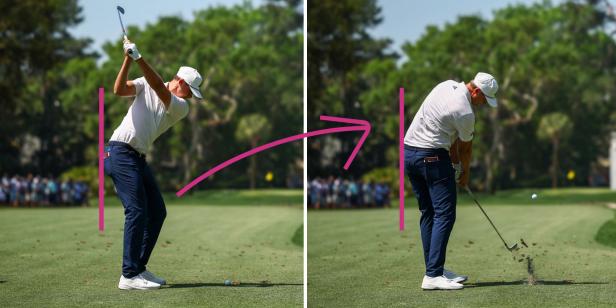Golf
This indoor drill created one of the best swings in golf—Ludvig Aberg explains how

Ludvig Aberg is a lot of things: A top-5 player in the world, a PGA Tour winner, the guy that taught American golf fans that the little circle above the A in Swedish (it’s called a “ring”) is actually its own vowel, roughly pronounced “Oah.”
But more than any of that, Aberg is the owner of one of the best swings in golf. The 24-year-old Swede swings with a simplicity that is a complete break from the many idiosyncratic, though exceptional, moves that top the game today.
It’s the swing that nearly won him the 2024 Masters in his first major championship start (he finished runner-up) and gave him the 36-hole lead at the U.S. Open at Pinehurst. He is among the top players on the PGA Tour in total driving (a stat that factors in both distance and accuracy), and he is inside the top 15 in numerous ball-striking statistics.
All of this for a guy who grew up in Eslov, Sweden, a town of 20,000 where winter high temperatures top off in the mid 30s—not exactly ideal for creating a technically sound golf swing. Or is it?
We caught up with Aberg to learn more about how he created the swing that we see today. Luckily for us, his go-to drill that he worked on as a kid at home can help fix two of the most common golf-swing issues: early extension and lack of shaft lean. Let’s dive in.
Growing up, Aberg had a very typical junior golf swing. Powerful, yes, but occasionally inaccurate because he would early extend in the downswing, when his hips would move toward the ball. This caused him to get stuck, he says, with the club coming too far from the inside. Tiger Woods had the same issue as a junior golfer. The result for both? Big hooks.
“That’s still my tendency today that I get a little bit on the inside, and I’ll just flip my hands,” he says.
To fix this early extension, Aberg turned to an at-home drill. “During the wintertime when we were back home, I would be inside, and I had a chair next to my butt, and I would always try to feel the pressure on the chair,” he says.
He would place a chair behind him, directly against his butt, get into a golf posture and make rehearsal swings, feeling his butt touching the chair throughout the entire swing. If he lost that pressure at any point in his swing, he knew he was early extending.
On the backswing, Aberg would feel his right glute pressure into the chair and as he started down, he would feel the left glute stay back and pushing against the chair. Notice how in the video above, Aberg’s butt never leaves the red line.
“The pressure shifts from my right heel to my left toe, without doing this,” he says, illustrating his hips thrusting toward the ball in the downswing—the move he eliminated.
The feeling of your pressure moving into your left toes in transition is a feel many tour players use because it not only promotes an inside path, but it is key to generating a lot of ground forces, which creates power, as Golf Digest’s No.-1 ranked teacher in America Mark Blackburn explains.
In addition to struggling with early extension as a junior, Aberg would occasionally stop turning through the ball and flip his hands and arms through impact. When he did this, he had very little forward shaft lean and struggled to compress his irons.
As a fix, Aberg added to his early extension indoor drill by placing a club or other object in front his where his hands were at address, about even with his left leg. Then, as he would rehearse his swing and keeping his butt back, he would drive his hands forward to hit that club before getting to impact.
He calls this “making sure my hands are in front of the line of fire,” and if you watch him closely today, he often makes this rehearsal in his pre-shot routine, keeping his hands in front of the clubhead through impact. For many amateurs who tend to release their hands and arms too early in the downswing, it’s a great feel for feeling forward shaft lean and compression.
So try Aberg’s go-to drill at home to fix your early extension and create more shaft lean. It might feel extreme to drive your hands so far forward into impact but remember this is just an exaggerated drill. During your actual swing, your hands won’t be nearly as forward, but it’s a great feel to learn how they need to move in the downswing.


)






